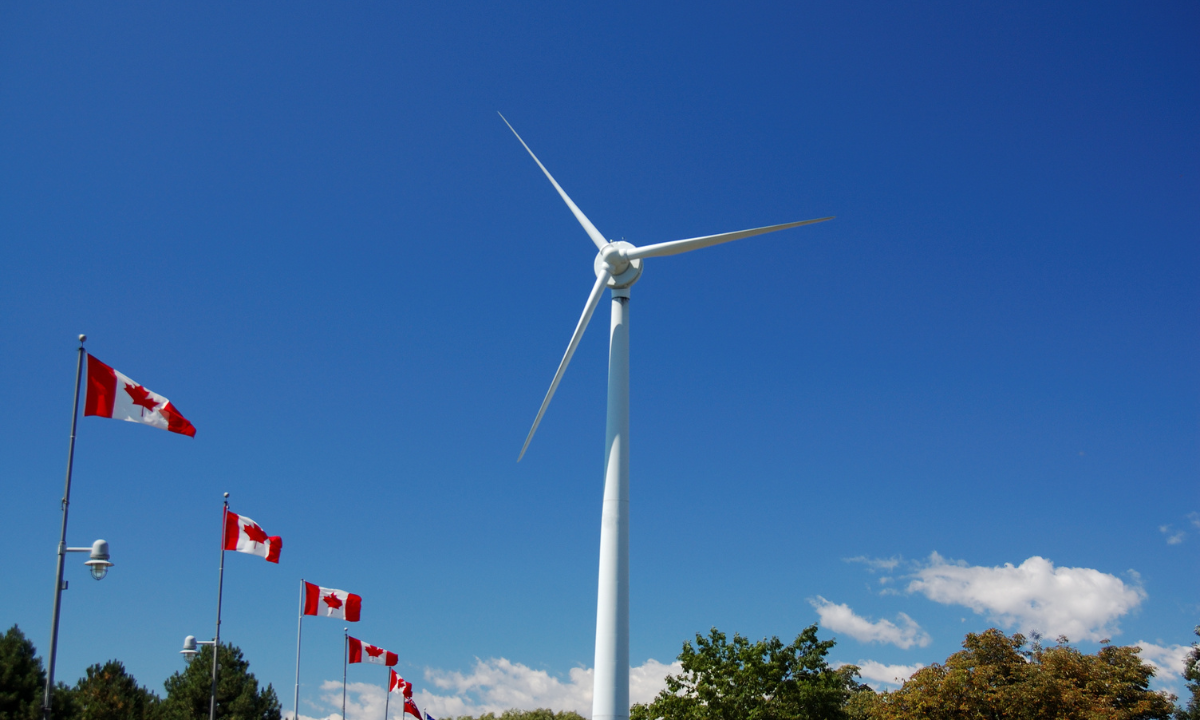Q&A: How will Canada define what a 'green' investment is?
Why It Matters
On Oct.9, Minister Chrystia Freeland announced the next steps toward Canada’s long-awaited green taxonomy. Work has stalled since 2022 because of fundamental differences in identifying transition investments. Distinguishing between green, transition, and brown investments is critical to directing more money toward socio-ecological transition.

As Canada transitions from its carbon-spewing oil-based economy to a net-zero carbon goal, its government has been struggling to define exactly what qualifies as a “green” investment.
In May 2021, the Sustainable Finance Action Council (SFAC) was mandated to provide advice and recommendations to Canada’s Deputy Prime Minister, Minister of Finance, and Minister of Environment and Climate Change on defining green and transition investment – also known as the green taxonomy
SFAC convened the Taxonomy Technical Experts Group (TTEG), which published “The Taxonomy Roadmap Report” one year later.
One of the report’s main conclusions is that Canada’s climate investment gap might be as high as $115 billion annually.
However, investors need a green taxonomy to identify clean climate investments to quickly scale up to achieve a net-zero economy by 2050.
Still, the dossier has stalled since the publication of the TTGE report because of fundamental differences of opinion among the multisector committee members.
Canada is an oil and gas economy, making it socially and politically delicate to identify real transition investments—those decarbonizing emission-intensive activities critical for sectoral transformation and consistent with a net-zero, 1.5C transition pathway.
It took a year before another step was taken. In the Fall 2023 Economic Statement, the Government of Canada committed $1.5 million toward developing the green taxonomy.
Last May, at the Montreal Sustainable Finance Summit, Environment Minister Steven Guilbault promised there would be “movement” concerning the taxonomy before the end of 2024.
On Oct. 9, in front of 2,000 Sustainable Finance leaders attending the PRI In-Person Conference in Toronto, Finance Minister Chrystia Freeland announced that an external expert organization would develop green investment guidelines for a first group of priority industries.
Once formed, the committee will have 12 months to determine the sustainable activities for each sector.
These assertions must be science-based.
To develop the guidelines, the external expert organization is expected to engage with financial market participants, industry and sector-based experts, experts in climate science, civil society, governments, and regulatory and Indigenous partners.
Freeland also announced the government’s intention to introduce amendments to the Canada Business Corporations Act to require climate disclosures by large federally incorporated private corporations.
What should investors and other stakeholders expect now after the Oct. 9 announcement? What comes next? What should we not hold our breath for?

We discussed this with Finance Montréal’s general manager, Jacques Deforges, and the vice president of Sustainable Finance, Florian Roulle. The interview has been edited for brevity and clarity.
Q: What is the relevance of a green taxonomy?
Deforges: It allows investors to identify activities contributing to a low-carbon economy and those that do not contribute or produce harm.
Roulle: A taxonomy identifies the green, brown, and transition activities. The latter are required to migrate from brown to green.
Q: Taxonomies are influenced by the economy. What are Canada’s taxonomy’s challenges?
Deforges: Canada is a resource-producing country. This adds to the challenge when an economy includes sectors that naturally do not contribute to decarbonization. A country with a smaller extractive industry will have more sectors classified as green. In Canada, the disparity between the economic fabric of the East and the West adds to the complexity of producing a green taxonomy. Quebec produces clean energy because it is a blue territory. If we had oil, we would have exploited it like any other state.
Roulle: All taxonomies, regardless of the jurisdiction, share a common obligation: they must be science-based. Science is implacable: to reach carbon neutrality by 2050, all countries must reduce emissions by 5 per cent yearly.
Q: What’s the main challenge of the future expert committee responsible for producing the taxonomy?
Roulle: Through dialogue, it must find a way to bridge the gap between the expectations of the financial community, civil society, research groups and conservation groups. However, such an exercise is bound to leave some unsatisfied. We must focus on the destination, carbon neutrality, by 2050 and base our approach on science.
Q: Wind power is a green activity, and oil is a brown activity. What are transition activities?
Roulle: It is those projects decarbonizing carbon-intensive industries, like the transportation sector. By decarbonizing the transportation industry, you contribute to a carbon-neutral trajectory.
Q: Minister Freeland announced that oil and coal activities would be excluded from Canada’s green taxonomy. However, the status of natural gas is pending. What is the score?
Deforges: The challenge is identifying how long we need natural gas to transition to a carbon-neutral economy. Germany, for instance, is building plants to replace Russian gas with American liquid gas.
Roulle: It is a fact: in 2050, fossil fuels will still be a significant part of the world’s energy mix. Natural gas will be part of this mix because it replaces more polluting energies. Current production capacities must be maintained to meet replacement demand. However, there should be a deadline. Science is precise: there should not be new fossil fuel exploitation projects. Even the International Energy Agency, which is not an environmental organization, stated there should be no new exploration or exploitation of fossil fuel projects.
Q: If natural gas is included in Canada’s taxonomy, how can investments in that sector contribute to the transition to a carbon-neutral economy?
Roulle: First, investments need to concentrate on safeguarding distribution. Methane leaks are widespread during natural gas transportation and are much more harmful than a CO2 molecule. It has a higher immediate climate warming effect. So, if we channel investments toward reducing methane leaks, rapid improvements will be generated. Second, if natural gas is part of the taxonomy, it should encourage renewable natural gas projects.
Q: What about investing in carbon capture technology?
Roulle: Carbon capture is a transition investment. However, there is a risk of “carbon lock-in.” Carbon lock-in refers to the concern that investments in carbon-intensive infrastructure today will delay or foreclose a clean energy future by making it too difficult or expensive to transition to alternative energies, thereby ‘locking’ a country into a fossil fuel-dependent development pathway.
Significant investments in carbon capture technology might lead to exploiting natural gas deposits beyond what science suggests to repay investors.
Q: On Oct. 9, Minister Freeland announced that the Canada Business Corporation Act will be amended to introduce mandatory climate-related financial disclosure requirements for large, federally incorporated private companies. Isn’t there already discontent with recent green disclosure rules from Canadian companies?
Roulle: We should distinguish between environmental communication and financial disclosure. They are different activities.
On June 24, Bill C-59 amended the Canadian Competition Act to create new rules for businesses’ environmental communications. It has been labelled an “anti-greenwashing” measure. The idea is to prevent false, misleading, or unsupported information about the environmental or climate benefits of an organization’s product, service, activity, or brand.
Reactions to Bil C-59 have been diverse. Some see it as a valuable step to limit greenwashing. Others worry that companies will remove useful environmental information for fear of being sued.
Environmental communication needs to be regulated, but there may have been a rush. Bill C-59 states that communication must be based on internationally recognized methodologies. However, Canada does not yet have the regulatory infrastructure to enable companies to back up their claims, which explains some frustration.
The Oct. 9 announcement concerns financial disclosure. Large Canadian corporations must disclose how climate change and the global energy transition will impact their business and future profitability. This is not environmental communication; it is investors’ information.
But let’s be clear: all these initiatives are related. Canada needs to invest in green and transition projects to reach carbon neutrality. That requires investors to get accurate information about companies’ climate exposure and carbon neutrality trajectories. It also requires the public to be informed about companies’ environmental impact so they can encourage those contributing to reach climate goals.
Q: What will be the biggest challenge for the future committee responsible for Canadian taxonomy?
Deforges: To make the results of their work acceptable. It can’t be disconnected from economic reality. A taxonomy can be very interesting, but it has to be accepted. Ruling on natural gas won’t be easy. Gas plants aren’t built to be shut down a few years later; they must be amortized.
Roulle: When you work with a large group, you tend to go for consensus. Climate action calls for boldness and courage. The other issue is justice. There will be company closures and stranded assets. Behind these companies, there are people. We need to offer them alternatives in emerging sectors. We must ensure that, through a fair, science-based taxonomy, we direct investment towards other areas of the economy.
This question of justice is particularly critical for First Peoples living in territories where wealth is based on fossil energy resources. What can the future taxonomy offer Canadians to help us win collectively?
